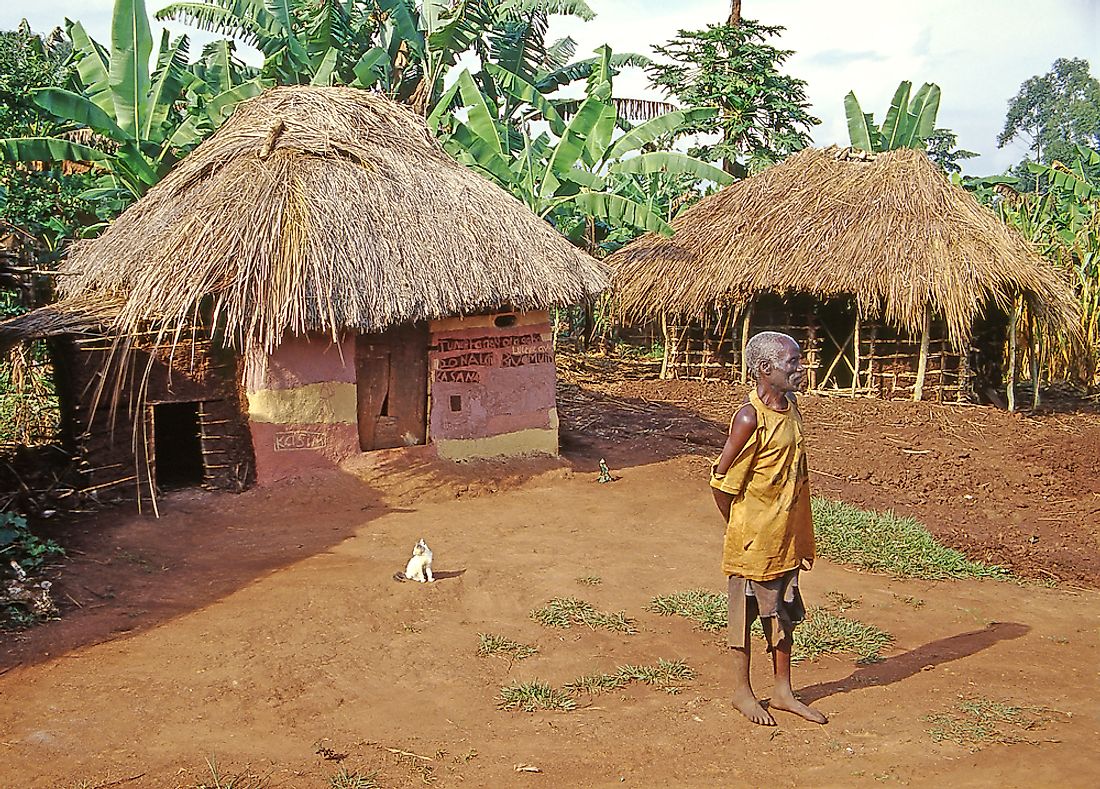The Ugandan People - Cultures of the World

5. Description
The Ugandan people hail from the landlocked country in East Africa officially known as the Republic of Uganda. It is bordered to the south by Tanzania, to the southwest by Rwanda, to the west by the Democratic Republic of the Congo, to the north by South Sudan, and to the east by Kenya. The Ugandan people's ancestors were accomplished hunters-gatherers up until 1,700-2,300 years ago, when Bantu-speaking groups arrived from Central Africa and moved to the southern regions of Uganda. These people brought with them new political and social ideas, as well as ironworking skills which they later developed as an effective means of making a livelihood. Ugandans speak more than 40 different languages today including Luganda, which is the most common of them all. English is considered the official language despite the fact that only a small percentage of the country's population uses it. Swahili, the East African lingua franca (), serves as a, effective bridge between the people of Uganda, Tanzania and Kenya.
4. Architecture
Many of Uganda’s people still live in the countryside, no less than 87% of them. The round hut, usually made of mud and grass, is the predominant architectural form in the country. Such dwellings are arranged in homestead groups that are rather minimalistic due to the Ugandan’s belief that the physical world is not as important or as rich as the spiritual world. Homesteads are built all over their chosen areas of residence forming villages that typically blend with nature and its surrounding environment. Only after the arrival of the colonizers did this change wherein urbanization flourished into cities and towns where administration and commerce were centered upon. The Indian duka, arcade buildings that combine shops and residential units, then became the quintessential establishment in Ugandan cities.
3. Cuisine
Ugandan cuisine is intermixed culturally, combining traditional East African tastes with those of Indian, English, and Arab influences. Boiled or steamed green bananas, called matoke, are a staple food for the people of Uganda, along with maize, or corn, which is usually ground into a meal then mixed with water to form a firm dough or some kind of thick porridge, such as posho. A stew of meat, beans or groundnuts form part of their main dish with chapati and root crops like sweet potato, yam and cassava on the side. Crispy fried or roasted grasshoppers is a delicacy in Uganda sold by sidewalk vendors together with varieties of homegrown vegetables and fruits.
2. Cultural Significance
85% of the Ugandan people are Christians while the rest are either Roman Catholics, Anglicans, Pentecostal, Adventists and Protestants.
Baganda is the largest ethnic group of Uganda and they live in the region of Kampala. Like a lot of other African countries, dance is an important part of their special events and ceremonies with each group having their own unique dances.
1. Threats
Uganda is among the poorest countries of the world, and its people are constantly being threatened by significant health issues like AIDS and Ebola. Maternal health is also a major concern, as it continues to lag behind the national government’s annual targets. The literacy rate is low in this nation, with only 76.8% of their males and 57.7% of their females being able to read and write. Many of Uganda’s concerns can be largely resolved by improving both their rural and urban infrastructure, especially in the fields of education and healthcare. Indeed, when people are healthy in body and well-learned, they are much more likely to succeed in business and all aspects of their lives











